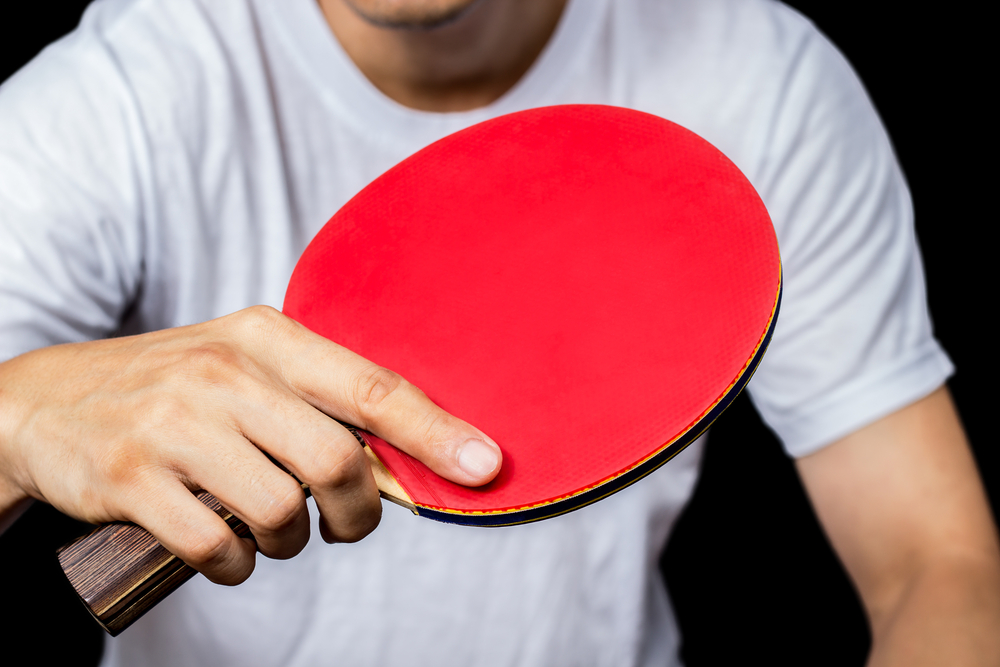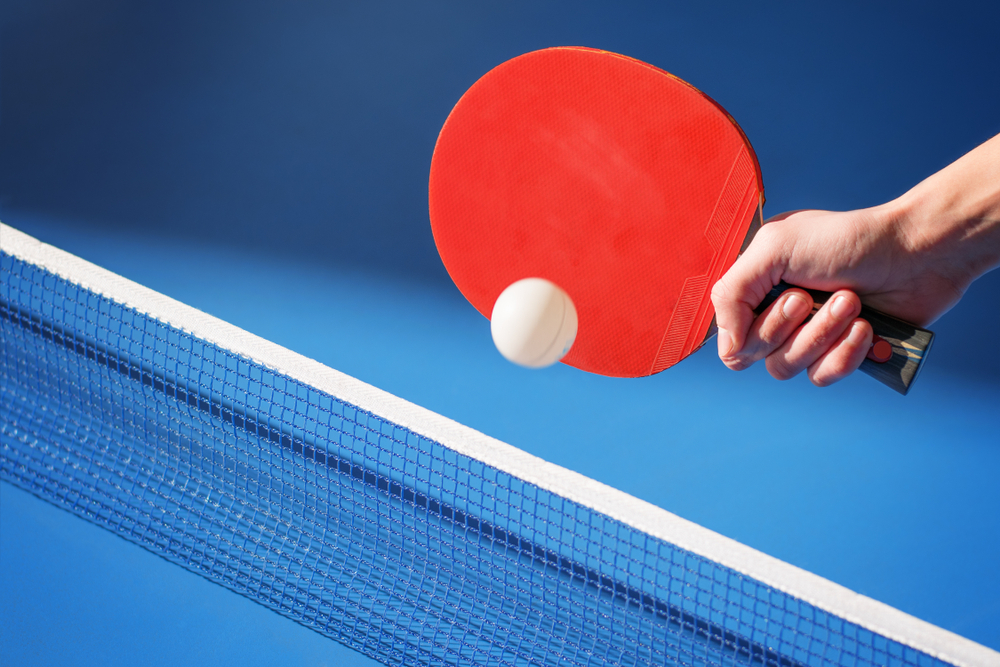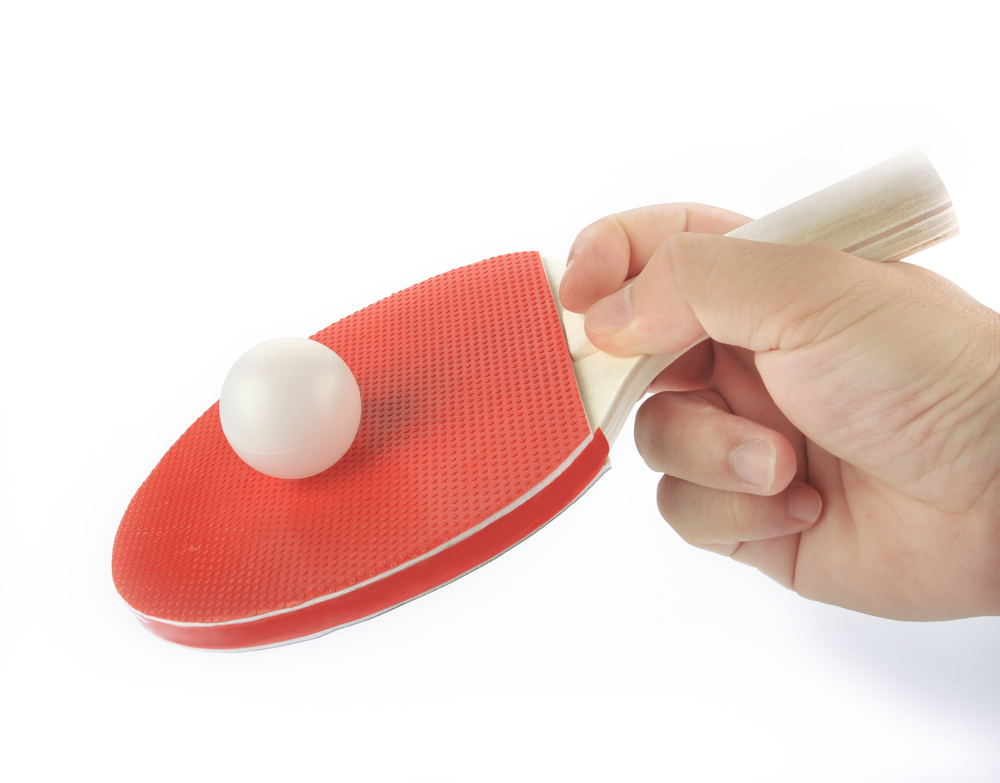There’s no other way to spin it: the first step to getting good at ping pong is learning how to properly hold a paddle.
That’s not breaking news to anyone who’s played the sport, but sometimes, the obvious is the most important. It’s easy to forget about the fundamentals when you’re trying to recreate the long, fast-paced ping pong rallies that you see in viral YouTube videos. But before you can pull off feats deserving of viral fame, you’ll need to start at square one of ping pong mastery: gripping a paddle with textbook technique.
Contents
The Importance of Learning to Hold a Ping Pong Paddle the Right Way
Any coach will tell you that to start right, you have to get a grip on it—the ping pong paddle, that is. And you have to learn how to do it correctly. It’s what every amateur contends with on day one of their journey in the sport. It’s also something a lot of pros revisit in an attempt to make the kind of small tweaks that can lead to big returns in competition.
There’s a reason why coaches and players obsess over something that seems as simple as holding a paddle. Grip the paddle wrong, and nothing else works right; not your control of the ball, not your strokes, not attack or defense — nothing. Master the mechanics of gripping the paddle and you’re well on your way to more advanced levels of the sport.
Some players may rush past this stage. That’s because holding a ping pong paddle is a deceptively complex skill to pick up. It may seem like a simple enough task to grab the handle, but that’s not all you’ve got to do. To get good at ping pong, you have to pay attention to exactly where you place each of your fingers and what you do with your wrist and arm thereafter.
There are many ways in which you can go about holding a ping pong paddle, but only two grips are considered canonical in the sport. We’ll go over each of them in detail so you can figure out through practice which one works best for you. Don’t have a spot to practice? Check out our favorite Ping Pong tables.
Shakehand Grip
The most common way to hold a ping pong paddle, especially among American and European players, is the shakehand grip. It’s called that because when you use this method, your grip will look a lot like you’re trying to shake someone’s hand. And like a good handshake, you want your grip to be firm, but not overly so.
One of the reasons the basic shakehand grip is popular is because it’s easy for beginners to grasp. You start by simply wrapping your fingers around the handle like you would anything else. Once you have a basic grip on the paddle, extend your index finger out and rest it on the blade. Next, ensure that the paddle rests easily at the bottom of the V-like shape formed by your index finger and thumb.

Advantages of the Shakehand Grip
- The shakehand grip is the most intuitive approach to holding a ping pong paddle. It closely resembles the way in which our hands naturally grip objects.
- The grip allows for a significant degree of wrist mobility. Moving your wrists freely is essential to being able to direct the ball accurately and moderating the amount of power you use in your shots.
- As mentioned earlier, the shakehand grip is the most popular method to hold a ping pong paddle in the western world. You will find coaches and learning materials easily if it’s your grip of choice.
Disadvantages of the Shakehand Grip
- Because the shakehand grip is popular, it’s also easier for opponents to deal with. You may be more predictable if you choose this grip.
- There is a point of indecision when it comes to balls coming straight down the centerline of your body. Since players hold the paddle right in front of their body with the shakehand grip, they can choose to hit either a backhand or forehand in that situation. You could lose precious time deciding which shot to employ and then in moving your body to line up the shot.
There are two variations of the shakehand grip based on how you position your thumb on the paddle.
Shallow Shakehand Grip
In the shallow shakehand grip, the thumb is placed only on the handle and doesn’t make contact with the blade. The position of the index finger remains unchanged. The shallow shakehand is the most natural way for most people to hold a paddle.

A lot of players use the shallow shakehand grip because of the natural feel and flexibility it offers. You can easily switch between forehand and backhand shots while using it. This method of holding a paddle lends itself especially to topspin and looped shots. Players whose games employ a lot of smashes and drives tend to prefer the grip.
Deep Shakehand Grip
The deep shakehand grip involves a slight modification to the shallow shakehand grip: you move your thumb up so that it rests partly on the rubber of the blade. It may seem like a minor change but it can lead to some important consequences for your overall game.

Changing the position of your thumb in this way has the effect of stabilizing your wrist to a greater degree than the shallow shakehand grip does. Because your wrist is more stable, you can throw your shots with a lot more power. If your ping pong game is based around power shots, then this is the grip for you.
The tradeoff that you make in gaining increased wrist stability is lower wrist flexibility. A more secure wrist is one that can’t move as deftly as with a shallow grip. As a result, you could have a harder time executing shots that require more finesse than power.
Penhold Grip
The penhold grip, as you may have guessed, involves holding the paddle like you would hold a pen. It’s popular among some of the best table tennis players worldwide (you can check out our top 10 list of the world’s best ping pong players here). To most beginners, this may seem like a rather precarious way in which to work a paddle. But once you get the hang of it, you’ll see that the penhold grip is not just manageable, but also lends itself perfectly to certain styles of ping pong play.

To use the penhold grip, start by wrapping your thumb and index finger around the top of the handle. Your thumb will rest on the blade and the index finger will curl around the handle. Place the paddle between the two fingers so that it slots in approximately in the middle. In the Chinese penhold grip, the remaining three fingers curl around the back of the paddle.
The distance that you maintain between your thumb and index finger comes down to personal preference. Some players have them overlap with each other or just in contact. Others may have a small gap between the two fingers. You’ll want to play around with this aspect of the grip before deciding what works best for you.
Advantages of the Penhold Grip
- The penhold grip allows for significant wrist mobility because of the unique way in which your fingers wrap around the paddle. This means that you can block shots that come straight for the center of your body, something that’s tricky with the [ANCHOR TO #Shakehand-Grip]Shakehand Grip[END ANCHOR LINK]
- You can use the same side of the paddle for both forehands and backhands. This can save you precious time in a fast-paced exchange.
Disadvantages of the Penhold Grip
- The penhold grip is less commonly used in America compared to the shakehand grip. This can make it harder to find coaches who will train you in this approach.
- The backhand topspin becomes a lot harder to pull off if you use the penhold grip. This is because of the awkward angle you have to get your wrist in to set up the shot.
The penhold grip has several variations, the most common being the Chinese penhold grip. There are two other variations of the grip.
Japanese Penhold Grip
In the Chinese penhold grip, the three supporting fingers curl up behind the paddle. In the Japanese version, they extend out onto the body of the blade. Players who use this modification do it to increase power output. That’s made possible by the extra support that the fingers on the body of the blade provide.
The high power this grip generates has an important spillover effect. It lets you stand further away from the table, giving you more time to see incoming shots. If you enjoy playing away from the table and base your game on power shots, then the Japanese penhold grip is one to consider.
Reverse Backhand Penhold Grip
The Chinese penhold grip makes it possible to hit both forehand and backhand shots with the side on which the thumb and index finger rest. But not all players do that. Some proponents of the penhold grip use the other side of the paddle for backhand shots. This is known as the reverse backhand penhold grip.
The reverse backhand penhold grip eliminates some of the challenges that come with hitting backhands using the penhold grip. It makes it a lot easier to produce powerful backhands with a lot of topspin applied to them.
How to Choose the Right Ping Pong Paddle Grip for You
If you’re just starting out, choosing a ping pong paddle grip can seem intimidating. As we saw, there are several options to choose from and each grip comes with its unique advantages and challenges.
But now that we’ve covered the best types of ping pong paddle grips, how do you know which one you should use? For us, it all comes down to practice. Players at every level of the sport have found success with every type of grip, so if you’re a beginner, pick one, stick with it, and go from there.
The key to finding a successful grip is sticking to that style until you have a basic understanding of the dynamics of the game. In the US, coaches will typically have their players start with the shakehand grip. It’s easy to wrap your head around as well as being a versatile base for a ping pong player. In other parts of the world, coaches start their players out differently.
Once you have a command of the basic shakehand grip, you can move onto the other ones. That can be the deep shakehand grip, the reverse backhand penhold grip, or some completely different variation.
Whichever grips you experiment with, the goal is to find one that you feel comfortable with. Once you have a well-developed grip that is natural to your style, you have successfully laid the foundation to reach more advanced levels of the sport of ping pong.
